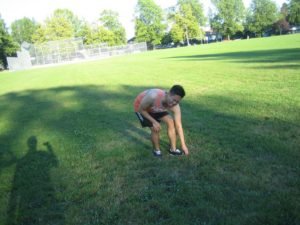A hip flexor strain can range from minor to severe (1st-3rd degree). When it comes to a 1st degree strain, it simply indicates that one of the hip flexor muscles have been stretched or minimally torn.
For 2nd degree strains, it involves a partial tear on the tendon or muscle while a 3rd degree strain involves a fully severed tendon or muscle. Once a tendon is driven off the bone where it is linked, it is considered as an avulsion fracture. Based on the degree of the damage, the recovery period can range for a few days up to months.
How do I end up with a hip flexor strain?
There are several muscles involved with the flexion of the hip and any of them can end up strained. The iliopsoas is the commonly affected hip flexor when it contracts in a forceful manner, particularly in cases where the leg is fully extended or prevented from moving.
Sprinting and kicking are the usual movements that cause a hip flexor strain, but bending at the waist can also be difficult after the injury. The hip flexors can also be overused which can result to strains. In addition, tip hip flexors can also put an individual at risk for strains.
Who are at risk?

Individuals who play soccer are at risk for hip flexor strains especially when sustaining a direct blow while attempting to kick. Even runners are at risk during the “kick” phase of a race, cyclist as well as martial arts athletes. Always bear in mind that any athlete who has frail or stiff hip flexor muscles are at risk for this injury. In addition, cold climate, poor flexibility and not warming-up properly can increase the possibility for a strain.
What are the symptoms?
- There is pain in the groin area or front part of the hip
- Possible swelling in the affected area
- Diminished strength when attempting to lift the knee against resistance
Initial treatment for hip flexor strain
The individual should take a break from any activity and rest for 24-48 hours to prevent further damage.
An ice pack can be used by applying for 15-20 minutes at a time at 3-4 times throughout the day during the initial 24-72 hours. Just remember not to apply the ice pack directly on the skin since this will cause further damage to the area.
Pain medications such as naproxen, aspirin or ibuprofen can be given to reduce the pain. Compression is also beneficial by using an elastic bandage. When it comes to 2nd and 3rd degree strains, the affected leg should be allowed to rest along with the application of ice and then consult a doctor for further care.
Prevention
Always bear in mind that any muscle that has been injured before is at risk for future injuries. It is vital to remember the rule not to increase the intensity, duration or frequency of an exercise routine more than 10% in a week.
